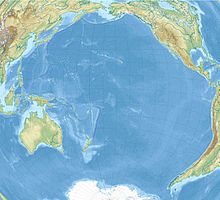
Back Kampene ved Matanikau Danish Operationen am Fluss Matanikau German Acciones a lo largo del río Matanikau Spanish Opérations de la rivière Matanikau French הקרבות בנהר מטניקאו HE Azioni sul Matanikau Italian Бои в районе Матаникау Russian Бої в районі Матанікау Ukrainian
| Actions along the Matanikau | |||||||
|---|---|---|---|---|---|---|---|
| Part of the Pacific Theater of World War II | |||||||
 A U.S. Marine patrol crosses the Matanikau River on Guadalcanal in September 1942 | |||||||
| |||||||
| Belligerents | |||||||
|
|
| ||||||
| Commanders and leaders | |||||||
|
Alexander Vandegrift Amor L. Sims Merritt A. Edson Chesty Puller Samuel B. Griffith Herman H. Hanneken |
Harukichi Hyakutake Kiyotake Kawaguchi Akinosuke Oka Masao Maruyama Yumio Nasu | ||||||
| Strength | |||||||
|
3,000[1] | September actions: 124th Infantry Regiment, 1,900 men[2][3][4] | ||||||
| Casualties and losses | |||||||
|
September Action: 91 killed, more than 100 wounded October Action: 65 killed[5] |
September action: 30 killed[6] October action: 700 killed | ||||||
Location within Solomon Islands | |||||||
The Actions along the Matanikau—sometimes referred to as the Second and Third Battles of the Matanikau—were two separate but related engagements between the United States and Imperial Japanese naval and ground forces in the Pacific theater of World War II. The actions occurred around the Matanikau River on Guadalcanal Island in the southwestern Pacific during the Guadalcanal campaign. These particular engagements—the first taking place between 23 and 27 September, and the second between 6 and 9 October—were two of the largest and most significant of the Matanikau actions.
The Matanikau River area includes a peninsula called Point Cruz, the village of Kokumbona, and a series of ridges and ravines stretching inland from the coast. Japanese forces used the area to regroup from attacks against U.S. forces on the island. From there, they launched further attacks on the U.S. defenses that guarded Henderson Field at Lunga Point on Guadalcanal, as a base to defend against Allied attacks directed at Japanese troop and supply encampments on western Guadalcanal, and as a location for watching and reporting on Allied activity around Henderson Field.
In the first action, elements of three U.S. Marine battalions under the command of U.S. Marine Major General Alexander Vandegrift attacked Japanese troop concentrations at several points around the Matanikau River. The Marine attacks were intended to "mop-up" Japanese stragglers retreating towards the Matanikau from the recent Battle of Edson's Ridge, to disrupt Japanese attempts to use the Matanikau area as a base for attacks on the Marine Lunga defenses, and to destroy any Japanese forces in the area. The Japanese—under the overall command of Major General Kiyotake Kawaguchi—repulsed the Marine attacks. During the action, three U.S. Marine companies were surrounded by Japanese forces, took heavy losses, and barely escaped with assistance from a U.S. Navy destroyer and landing craft manned by U.S. Coast Guard personnel.
In the second action two weeks later, a larger force of U.S. Marines successfully crossed the Matanikau River, attacked Japanese forces under the command of newly arrived generals Masao Maruyama and Yumio Nasu, and inflicted heavy casualties on a Japanese infantry regiment. The second action forced the Japanese to retreat from their positions east of the Matanikau and hindered Japanese preparations for their planned major offensive on the U.S. Lunga defenses set for later in October 1942 that resulted in the Battle for Henderson Field.
- ^ 2,100 were involved in the September action. Frank, Guadalcanal, p. 271. Number estimated by adding the reported strength of the 1st Battalion, 7th Marines (900) to the estimated strengths of the 2nd Battalion, 5th Marines (600) and 1st Raider Battalion (600).
- ^ Peatross, Bless 'em All, p. 112
- ^ Zimmerman, The Guadalcanal Campaign, p. 101
- ^ Smith, Bloody Ridge, p. 204.
- ^ 91 were killed in the September action and 65 in the October action. Smith, Bloody Ridge, p. 213. Frank (Guadalcanal, p. 274) says 60 were killed.
- ^ Between 30 and 60 were killed in the September action. Smith, Bloody Ridge, pp. 206, 213.

